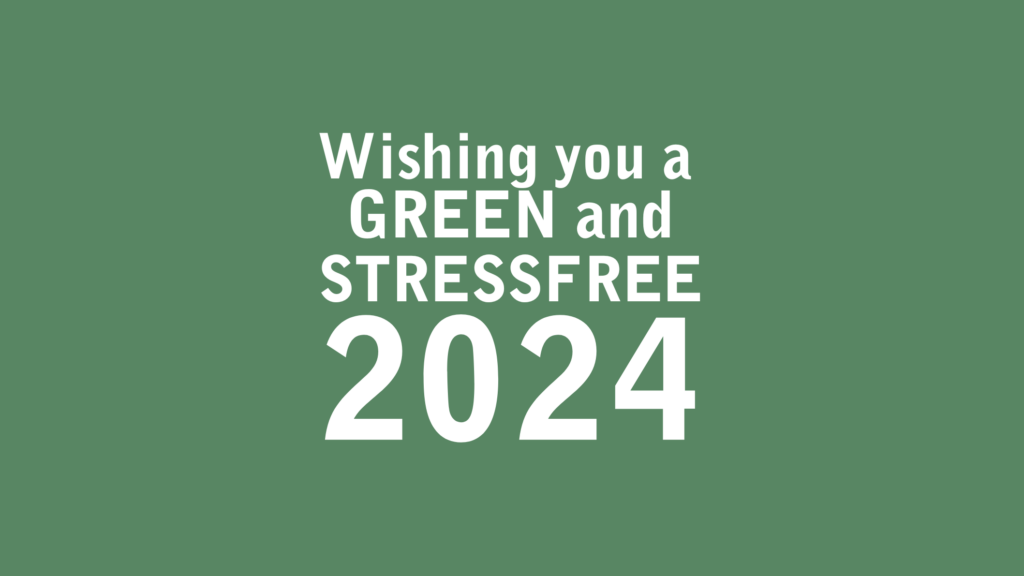
‘Wishing you a GREEN and STRESSFREE 2024’
When I say GREEN, I’m not talking about the climate or political parties. I think that other people can do that much better.
My GREEN is about ENERGY MANAGEMENT: physical energy, emotional energy, mental energy… to name a few … and they are all interlinked…
What if we compared our body to a BATTERY.
During the day, while we work, live and play, the energy level of our battery goes down. And there is nothing wrong with that. As long as … we can recharge afterwards.
This recharging happens, amongst others, while we relax and sleep.
Usually everything works well. But sometimes, our lives are too stressful (too red), and our nights are not good (=not GREEN enough) and if this goes on for too long… we stay in red, even while we rest and sleep. The ‘charging mechanism’ breaks down… and the battery doesn’t recharge, even when we think it does. (Don’t worry… it can be fixed again, more about this in 2024).
My first wish to you: not too much red and enough GREEN so you can keep on recharging that battery!
Let’s now move from that battery to a barometer…
And imagine that when the arrow points to GREEN, you are calm and zen and when it is in the red zone, you are triggered and stressed… And moving from one side to the other can go very quickly, or … you can get stuck in red (or orange) for longer periods of time or … with certain people ;-D.
Let’s look at an ‘acute’ example:
You are having a conversation, and everything seems to be ‘love, peace and harmony’ and … suddenly the person says or does something that triggers you… It is possible that you will go abruptly from green to red and … that the tone (and the outcome!) of the discussion changes completely…
Has this ever happened to you?
And how about this ‘chronic’ example:
Suppose you don’t like Peter very much. Maybe he does things differently than you would. Maybe you’ve asked him to do something and he didn’t… Maybe he triggered you in the past (= the ‘acute’ example…).
If you don’t ‘explore’ this and work on it, you will probably be ‘red’ whenever you interact with him, you even might turn ‘red’… just thinking about him…
My second wish to you: realise when you are in red and be able to turn back to GREEN.
The quick ones might already have noticed the connection between the battery and the barometer… If my battery is low, I am more likely to be or move to red.
If my battery is full, I am more likely to be in GREEN (or be able to move back to it).
And… if the arrow on the barometer is too often on red, this will have an impact on my battery…
Is my ‘wishing you a GREEN and stressfree 2024’ making more sense now?
My goal for 2024?
- Make sure I have a functioning, recharging battery.
- Notice when I go to red, and do my utmost best to go back to GREEN.
I will be managing my energy!
I will keep on learning about it, experimenting with it, sharing about it and teaching it.
If this is something you also want to get better at, make sure you are signed up for my tips and tricks.
My very best wishes,
Nancy
#fromredtogreen
#energymanagement
#youalwayshaveachoice
#YAHAC




